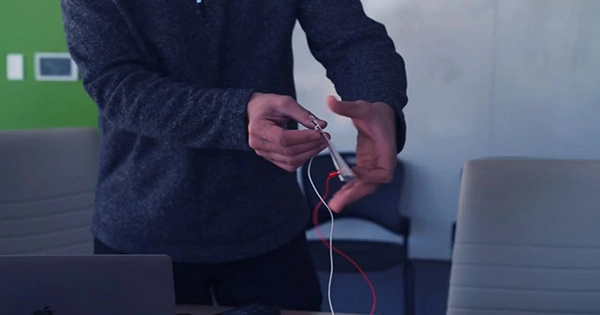If you’re interested vehicles, you’ve probably heard of vinyl wrapping, which can transform a vehicle’s look. Engineers at MIT have developed a thin film that can convert almost any surface into a speaker using a comparable thin substance. Its creators claim that it can provide high-quality audio with minimum power usage. The researchers developed a manufacturing process to accomplish these features. They believe it can be scaled up to make ultra-thin loudspeakers thin enough to cover the interior of a car or wallpaper a room, promising immersive music without a visible source. A cochlear hard-on is certainly coming on for the audio geek in me.
Yes, that’s a cruel joke, but you’d be deaf if your cochlear fuzzies stiffened, so physiologically it makes no sense. The extent to which I’ll go for a childish joke are legendary. For example, the loudspeaker might be used in active noise cancellation, combining speaker technology with electronics and microphones to block out sound. The creators also envisage low-energy use cases such as smart gadgets and other immersive sound experiences.
“It’s incredible to take a skinny sheet of paper, tie two clips to it, plug it into your computer’s headphone socket, and start hearing noises emerging from it.” It may be utilized in any situation. “All it takes is a smidgeon of electrical power,” says Vladimir Bulovi, Fariborz Maseeh Chair in Emerging Technology, leader of the Organic and Nanostructured Electronics Laboratory (ONE Lab), director of MIT.nano, and senior author of the article. Bulovi collaborated on the work alongside Jinchi Han, a ONE Lab postdoc, and Jeffrey Lang, a Vitesse professor of Electrical Engineering, as main author.
The findings were published in IEEE Transactions on Industrial Electronics today. Because the film must flex freely to create sound, most thin-film loudspeakers are intended to stand alone. The vibrations would be hampered and their capacity to make sound would be hampered if these loudspeakers were mounted on a surface. To solve this issue, the MIT researchers redesigned a thin-film loudspeaker.
Rather of having the entire material vibrate, their concept depends on small domes vibrating separately on a thin layer of piezoelectric material. These domes, which are only a few hair widths wide, are protected from the mounting surface by spacer layers on the top and bottom of the film while yet allowing them to vibrate freely. The domes are protected from wear and impact by the same spacer layers, which increases the loudspeaker’s longevity.
“By activating a scalable physical surface, we have the power to accurately induce mechanical motion of air.” “The possibilities for using this technology are endless,” Bulovi explains. There’s no indication on whether or not the technology will be used in consumer or business applications, but I’d wallpaper my living room with speakers in a heartbeat simply to get rid of the cords and speakers that are permanently attached to the wall.















